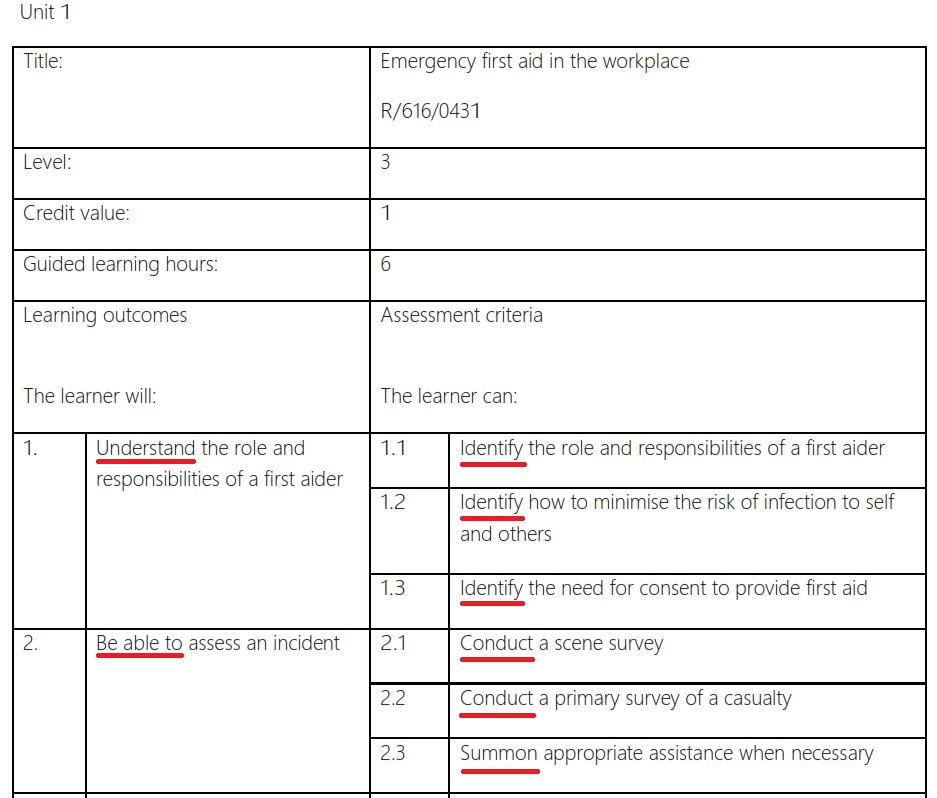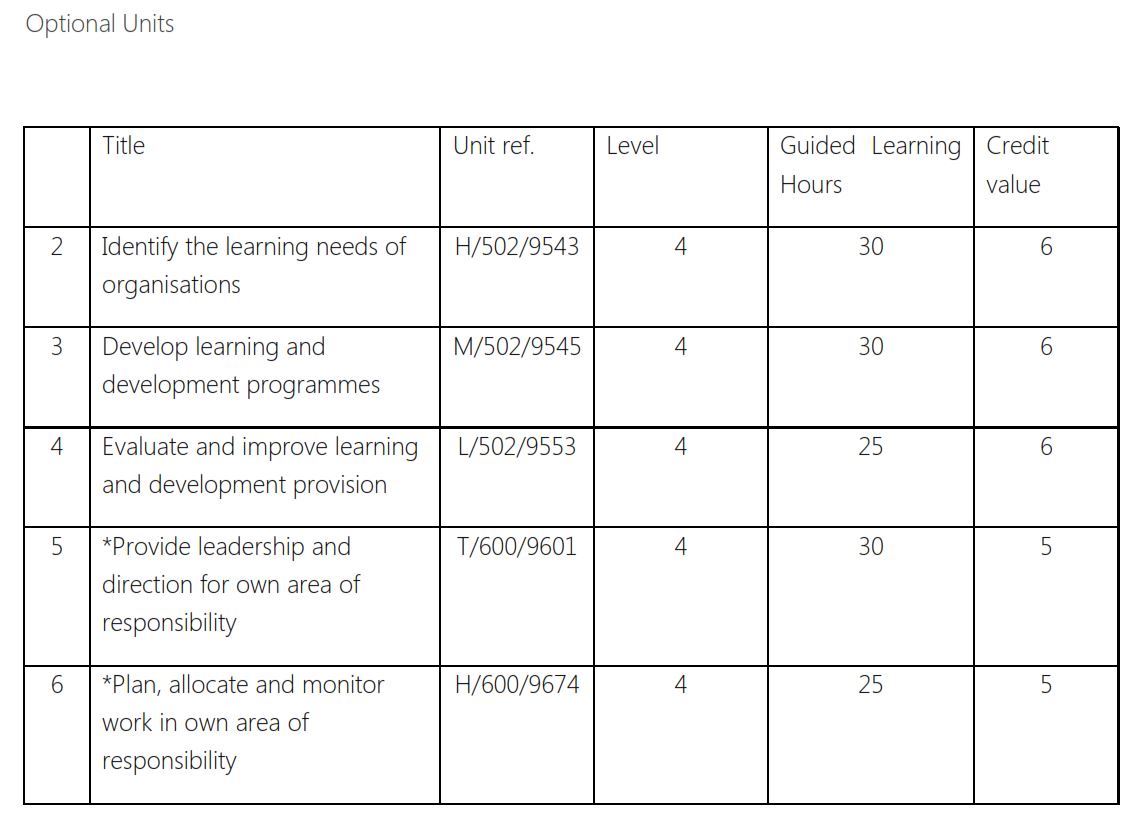Have you just become a TQUK centre? Do you need help creating Centre Devised Assessments? Well you’ve come to the right place!
We get all sorts of questions about Centre Devised Assessments: what they are, how they should be created and what the approval process looks like. So we wrote this blog to help all of our centres learn more about Centre Devised Assessments and how they can satisfy our qualification requirements. Enjoy!
What is Centre Devised Assessment?

Every TQUK Recognised Centre that delivers our regulated qualifications is required to devise an assessment for each TQUK qualification they deliver. These are called Centre Devised Assessments (CDA) and must be created in line with the learning outcomes and assessment criteria in the TQUK qualification specification. Our centres can find these qualification specifications in Verve under the ‘Qualifications library’ tab. They can click on the qualification name and find the specification under ‘Documents’.
After a centre creates a Centre Devised Assessment, they must submit it to the TQUK Quality Team to be reviewed before it can be approved and used in the delivery of our qualification.
Exceptions to Centre Devised Assessments

There are a few qualifications we offer that require externally set and marked exams which we provide to our centres. These exams cannot be replaced by Centre Devised Assessments. These qualifications include:
- TQUK Level 2 Award in Personal Licence Holders (RQF)
- TQUK Level 2 Award in Food Safety in Catering (RQF)
- TQUK Level 2 Award in Food Safety in Manufacturing (RQF)
- TQUK Level 2 Award in Food Safety in Retail (RQF)
- TQUK Level 2 Award in Health and Safety in the Workplace (RQF)
- TQUK Level 2 Diploma for Hair Professionals (Hairdressing) (RQF)
- TQUK Level 2 Diploma for Hair Professionals (Barbering) (RQF)
We also provide optional assessment materials for a number of our qualifications which our centres can choose to purchase. These qualifications include:
- TQUK Level 2 Award in Cardiopulmonary Resuscitation and Automated External Defibrillation (RQF)
- TQUK Level 3 Award in Emergency First Aid At Work (RQF)
- TQUK Level 3 Award in First Aid At Work (RQF)
- TQUK Level 3 Award in Paediatric First Aid (RQF)
- TQUK Level 1 Award in Principles of Fire Safety Awareness (RQF)
- TQUK Level 2 Award in Fire Safety Principles (RQF)
How Do I Create a Centre Devised Assessment?

A Centre Devised Assessment should be created to satisfy every assessment criteria in the qualification specification.
Each criteria will start with a command verb. There are a large range of command verbs that we use in our criteria which may include:
- Analyse
- Explain
- Demonstrate
- Identify
- Understand
So, for example, the command verbs for the learning outcomes and assessment criteria for a portion of Unit 1 of the TQUK Level 3 Award in First Aid at Work (RQF) are underlined in red:

These command verbs outline what the learner must be able to do in order to satisfy that assessment criterion and, by extension, pass our qualification.
These command verbs also suggest what kind of evidence must be gathered in order to achieve those criteria which will indicate what assessment activities can be used to collect this evidence.
As we’ve mentioned in a previous blog on performance evidence, generally you can find out what evidence an assessment criterion requires by looking at the command verb in the learning outcome. Generally, learning outcomes with the command verb ‘understand’ will test a learner’s knowledge and will require knowledge evidence. Learning outcomes with the command verb ‘be able to’ or ‘demonstrate’ will test a learner’s ability and will require performance evidence.
Using the example above, as the learning outcomes require the learner to ‘understand the role and responsibilities of a first aider’ and ‘be able to assess an incident’, both knowledge evidence and performance evidence should be collected. So the Centre Devised Assessment used to collect this evidence could include questions and answers and an observation.
As with every rule, there are exceptions. It is always best practice to look at the command verb used in the individual assessment criterion to see what specifically needs to be assessed from the learner and how. In this case, assessment criteria 1.1-1.3 use the command verb ‘identify’ which tests a learner’s knowledge, confirming that knowledge evidence will need to be collected. Assessment criteria 2.1-2.3 use the command verbs ‘conduct’ and ‘summon’, testing the learner’s abilities and confirming that performance evidence will need to be collected. An assessor’s own judgement will be needed in situations like this, but if you’re unsure of the assessment activities required by certain assessment criteria, then please contact the Quality Team at 03333 583344 or email them at This email address is being protected from spambots. You need JavaScript enabled to view it..
If a learning outcome or criteria requires performance evidence, a range of activities can be used to collect this evidence. This can include an observation, a work product or a witness testimony and depends on what the assessment criterion asks for. You can read our performance evidence blog to learn more about what assessment activities should be used for different criteria. If a centre carries out an observation as their assessment activity, then they should complete an observation report confirming and detailing that they’ve observed the learner meeting the requirements of the assessment criteria.
Check out our blog on knowledge evidence and performance evidence if you’d like to learn more about when you should collect each form of evidence and what assessment activities can be used.
Mandatory Units and Optional Units

Under the ‘Structure’ section of our qualification specification, we will specify whether a qualification contains only mandatory units or both mandatory and optional units. For qualifications that only contain mandatory units, it is important that the Centre Devised Assessment covers all of the assessment criteria under every unit.
For qualifications that have both mandatory and optional units, centres should create an assessment that covers all of the mandatory units and can pick which optional units to create an assessment for as long as the minimum required credits have been met for those optional units. This information can also be found under the ‘Structure’ section. This requirement demonstrates that if a learner undertakes their CDA, then they will have met all of the necessary criteria and will have the opportunity to complete the qualification.
So, let’s take the TQUK Level 4 Award in Learning and Development (RQF) as an example:

The qualification states that ‘learners must achieve at least 12 credits: six credits from the mandatory unit and at least six credits from the optional group’.
This means that a centre must create a Centre Devised Assessment for the mandatory unit and must pick at least one optional unit which contains a minimum of six credits to create an assessment for as well.
Let’s look at the optional units below:
If a centre picks the second optional unit ‘Identify the learning needs of organisations’ to create an assessment for, then they should satisfy all of the assessment criteria under that unit within their assessment. This is because a Centre Devised Assessment must be created on a unit basis and not an individual assessment criterion basis. A centre could not create an assessment that would satisfy a few assessment criteria from the second optional unit and a few assessment criteria from another optional unit to satisfy the minimum six credit requirement.
When our centres send us their Centre Devised Assessment, they must also indicate how the assessment has satisfied all of the necessary assessment criteria, which is called assessment mapping. So, if they used questions and answers in their Centre Devised Assessment, then they could write the assessment criterion number that has been covered next to the question number such as Q1 (1.1), Q2 (1.2), Q3 (1.3) and so on. This demonstrates to our Quality Team that all of the units and criteria have been satisfied.
What is our Centre Devised Assessment Approval Process?

The Centre Devised Assessment approval process will go something like this:
1. First Contact with our Client Relationship Officer
When you first become a TQUK Recognised Centre, one of our Client Relationship Officers will get in touch and ask you questions to ensure that you can effectively deliver our qualifications. They will then inform you that you must submit your Centre Devised Assessment for approval to the Quality Team.
2. The Centre Can Contact the Quality Team with their Questions before Creating their Centre Devised Assessment
The Quality Team recommends that a centre should contact them by emailing or calling prior to creating their Centre Devised Assessment. They will be able to help them with any queries they may have and provide thorough guidance on creating a CDA, including advice on any specific assessment requirements that may be included in the qualification.
As part of this guidance, the Quality Team can send the centre a number of documents that will help them create their Centre Devised Assessment including:
-
Guidance on How to Create a Centre Devised Assessment
- This document will contain in-depth information on how to create a Centre Devised Assessment. This will include information on command verbs, the difference between them and what evidence they may require; our assessment mapping requirements and which specific criterion a question or assessment method may relate to.
-
Assessment Mapping Template
- This is a template that our centres can use to complete their assessment mapping.
-
Observation Record Template
- This template can be used by our centres to record any observations that they’ve undertaken with their learners to collect performance evidence. It will allow the assessor to include details such as the date, the learner’s name and note down the various details of the observation.
3. The Centre will Send the Quality Team their Centre Devised Assessment and Assessment Mapping
The centre should send their CDA and assessment mapping to the Quality Team via email at This email address is being protected from spambots. You need JavaScript enabled to view it.. The Quality Team will then inform the centre of the Service Level Agreement (SLA) which outlines that once they have received a Centre Devised Assessment, they will review it and give appropriate feedback or approve the assessment within five working days.
4. The Quality Team will Review the Centre Devised Assessment
The Quality Team will then review the CDA and assessment mapping and determine if the assessment is appropriate for use. If they determine that a Centre Devised Assessment is not appropriate for use, then they will give the centre feedback via email on any amendments they think should be made. If a centre would like to discuss and clarify any comments made on their CDA then they should email the Quality Team or give them a call. They will be happy to provide support, talk the centre through their CDA and explain how they can better meet the requirements of the qualification.
5. The Quality Team Waits for the Revised Assessment
Once the Quality Team has sent back feedback to the centre they will wait for them to implement the changes and send back their revised assessment.
6. Approval of the Centre Devised Assessment
After a thorough review of the CDA and once the Quality Team is sure that all of the qualification requirements have been met, they will happily confirm its approval via email.
7. The Centre will use their Centre Devised Assessment with their Learners
The centre will then use their CDA to assess their learners in the delivery of our qualification. If the centre does not hold Direct Claim Status, then after the CDA has been completed by all of their learners and once they have all been passed on the Management Suite, the Quality Team will request sampling.
If any changes are made to the CDA in the future, then the centre must resubmit their new CDA for approval once again.
~
We hope this helped you make more sense of how to create Centre Devised Assessments for your learners! If you have any questions about CDAs or would like guidance on creating your own CDA then please feel free to contact the Quality Team at This email address is being protected from spambots. You need JavaScript enabled to view it. or by calling them at 03333 583344.
To keep up to date with the latest news and updates from TQUK, return to our blog or follow us on Twitter, Facebook, Instagram and LinkedIn.
See you out there!





